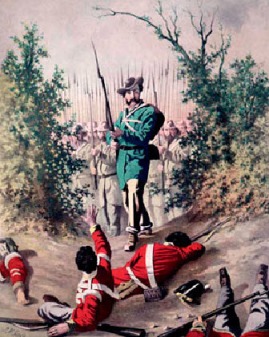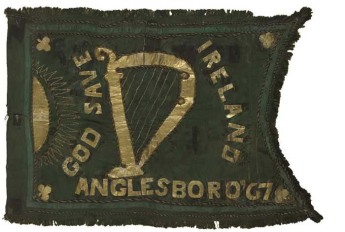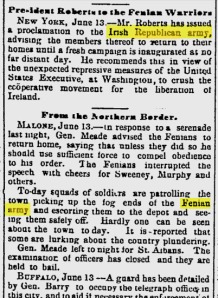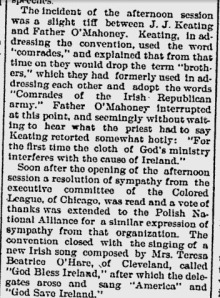While many decry the growth of the internet for its allegedly deleterious effects on the absorption of information by the human mind, as well as the decline of the reign of the printed word, I tend to view such claims with scepticism. The world wide web, like any technology, is what you make of it. People who made use of the knowledge to be gained from books during the era of the hardcopy will be the same people who will make use of the knowledge gained from the internet in the era of the softcopy.
In fact the availability of a global information network has opened up sources of information to literally millions of human beings who previously would never have had the opportunity to access them. I sometimes wonder if that, indeed, is the subconscious motivation of some of those who object to such a wealth of freely available knowledge – a world-wide digital library or archive for all. The move from the literate elites to the literate masses is perhaps something that not everyone welcomes. After all, information is power. And when that information does not come through one prism, one political, media or cultural establishment, then a plurality of views and opinions are possible.
Which makes the demands for a “capitalist web” of fee-paying, membership-only sites and domains all the more interesting. There is more behind the calls to “monetize” the internet than simply a motivation to create new sources of revenue and income in a new market.
However, all that (for the moment) is an aside. Let me turn instead to some of the benefits of the global archive for those of us with an inquiring mind. In this case I wondered if it was possible to find original, online sources for the first use of the term “Irish Republican Army” or “IRA”. Most people believe it to be a 20th century creation, from Ireland naturally enough. In fact its origins date back to the latter half of the 1800s and the United States of America. It was amongst the revolutionary Fenian Brotherhood (FB or in the Irish language Bráithreachas na bhFíníní, abbreviated as BnaF or BF) that the name originated. This was the Irish-American sister-organisation of the Ireland-based Irish Republican Brotherhood (the IRB. In Irish this is translated as Bráithreachas Phoblacht na hÉireann or BPnaÉ or BPÉ). It came to prominence during the period of the 1860s to 1880s in the Fenian Invasions of Canada as the title of the military wings of the various guises of the Fenian Brotherhood in North America, and occurred both as the “Irish Republican Army” and the “Army of the Irish Republic” (with the usual abbreviation of “IRA”).

I have been unable to discover what title was used, if any, by the formal military structure of the Irish Republican Brotherhood (or its off-shoots) in Ireland during this period and at the time of the Fenian Rising of 1867. It seems that the name IRB (or the more circumspect “Organisation”) was sufficient, though I would be very interested if anyone has other information.

The title of the IRA faded from organisational use in Irish Republican and Fenian circles until the 1916 Revolution when it was revived again as the Army of the Irish Republic or Irish Republican Army, this time by the Provisional Government of the Irish Republic (the members of the Provisional Government of course were all members of the Irish Republican Brotherhood, and a “Provisional Government of the Irish Republic” was proclaimed by the IRB in the late 1800s). In fact this IRA was an amalgamation during the insurrection of two separate military organisations: the Irish Volunteers (in Irish, Óglaigh na hÉireann or ÓnaÉ) and the Irish Citizen Army (ICA or Arm Cathartha na hÉireann: that is ACnaÉ or ACÉ). Three other revolutionary groups of the Easter Rising are sometimes included under this umbrella title: the Hibernian Rifles (the HR, “Rifles” or “Hibs”), the Cumann na mBan (CnamB), and Na Fianna Éireann (NFÉ or FÉ).
After 1916, as the revolution progressed, all these organisations retained their separate structures while the largest, the Irish Volunteers, quickly became the sole one synonymous with the name Irish Republican Army. Eventually the Volunteers adopted the term (or its long-standing abbreviation of IRA) as its normal English language title while its Irish language title remained Óglaigh na hÉireann (ÓnaÉ). In fact, in the Irish language the Irish Republican Army is Arm Poblachtach na hÉireann (APnaÉ or APÉ).

During Ireland’s Civil War of 1922-1923 the title of “Irish Republican Army” became indelibly associated with the majority Anti-Treaty IRA forces, while the break-away minority in the Pro-Treaty IRA became the Irish National Army (INA). Both, however, continued to style themselves in Irish as the Óglaigh na hÉireann. In fact, many INA units continued to call themselves the Irish Republican Army until relatively late in the conflict, refusing to give up their former title (much to the annoyance of the new Free State’s political establishment which was usurping the authority of the existing Irish Republic). In the 1930s, when the defeated Republicans of the Civil War rose to power again and many of the Anti-Treaty IRA volunteers joined and rose to positions of rank in the INA, it became, in English, simply the Irish Army.
Meanwhile, since the 1920s virtually all Irish Republican revolutionary forces have used the name Irish Republican Army in English while using Óglaigh na hÉireann in Irish (thus the Provisional, Continuity and Real IRAs all styled or do style themselves as Óglaigh na hÉireann or ÓnaÉ). Even the Irish National Liberation Army (INLA) occasionally used the Irish term Óglaigh na hÉireann rather than a direct translation of its English name into Irish (Arm Saoirse Náisiúnta na hÉireann or ASNnaÉ). So far there has been a great reluctance by most Irish Republican military organisations to relinquish both the terms IRA and ÓnaÉ, especially as the former has such a historic and cultural pedigree. Strangely, given the Irish Nationalist cause revolutionary Republicans espouse, only two groups, Saor Uladh and Saor Éire, have used purely Irish names with no English equivalents.
So to my search and the four earliest (free-to-view!) mentions of the “Irish Republican Army” via Google News. All date from the latter half of the 19th century, the earliest 1866. They are small, but significant, snippets of Irish history.
“Irish Republican Army” – Manufacturers and Farmers Journal – Jun 14, 1866
“Irish Republican Army” – New York Times – Aug 1, 1867
“Irish Republican Army” – New York Times – May 9, 1868
“Irish Republican Army” – Aurora Daily Express – Sep 27, 1895

Out of interest I also searched for the “Army of the Irish Republic”, and here are some of the earliest results (the first is particularly good):
“Army of the Irish Republic” – New York Times – Jun 2, 1866
“Army of the Irish Republic” -New York Times – Jun 9, 1866





Thank you for this very interesting article.
For my own purposes in briefly skimming over the reasons for Sectarianism in the West of Scotland, I have used the 20th Century date.
I suspect however the earlier date would be more strictly accurate as far as the organisation and movement is concerned.
It is always a difficult proposition to find the real start of anything,like where do the various streams of the beginning of a river begin?
But thank you for your research here, If only for a closer perspective on my part.
I agree entirely over your point re Internet freedom. It is very clear why States would wish to do away with such freedoms for their populaces. My only surprise is that It has taken so long to attempt to curb!!
LikeLike
I quiet agree. The internet, for all its faults, is still the greatest technological boon for the dissemination of knowledge and information since the invention of the printing press. More so than radio, cinema or television.
LikeLike
This is a wonderful article and very revealing. I never thought the term was something which emerged in 1918 or 1919 but was something vintage from the 19th century, and of course the Fenian Brotherhood the likely source. So sad that Sgt Lynch was not given his christian funeral in 1867 but this is the same year of the Fenian uprising in Ireland and of course they had long since invoked the hatred of the church. Great research and well done! Yes, must agree about internet freedom, its taken so long, to respond to auld…., as there was not a global capitalist crisis for most of the past ten years, now with Occupy etc, time has come to restrict freedoms, I would say.
LikeLike
I quiet agree about the internet and the attempts to restrict it. What makes it worse, the challenge to the freedom of the web is coming from the mainstream media establishment too. Governments are not the only ones who fear an information revolution.
LikeLike
BIg Business, Governments and Mainstream Media are all part of the one cosy club. The Internet is their greatest nightmare. People can access information in seconds and spread that Informations around the world in minutes, crossing all borders and time zones.
Control is kept by a constant drip of misinformation,keeping the people docile and fed on a diet of I’m a celebrity X factor Strictly Big Brother. But information learned and shared threatens the whole pyramid. Thus the desire to restrict Internet,shut down Wikileaks and dislike of social sharing programmes like Facebook and Twitter.
In Scotland BBC news have shut down all comments on their reporters economic and political blogs, because every article was being challenged and ripped to pieces by Scots nationalists. No such restrictions in place in England!
The Internet has also assisted Scots make and share contacts and information with those elsewhere in Ireland, Wales and across the North sea. along with sharing news amongst each other…These are the feared Cybernats which has the Establishment shaking in its boots. Not political party entities but just ordinary people who have had their eyes opened and are sharing what they have learned with each other.
In Scotland certainly there is a War, and its battleground is Cyberspace!
LikeLike
Interesting topic. In war in the shadows shane kenna taken from the scotland yard archieves there is a picture of a piece of shrapnel from a bomb planted in the 1880’s with the incription IRA on it. So bit of a link between 1867 and 1916. Suggests that the name didn’t come out of no where and that militants back then had a concept of it.
LikeLike
Absolutely. The terms “Irish Republican Army”, “Army of the Irish Republic”, etc. were in common circulation amongst Republicans in Ireland and abroad throughout the late 19th and early 20th centuries. Though some point to 1798 it seems likely that the term gained popularity in the United States first and was quite possibly an American creation in the form we now know it.
The majority of Fenian attacks on Britain originated in the US and with US organisations (the United Irishmen and revived Fenian Brotherhood, the Clan na nGael, etc.). The acronym “IRA” was certainly known to them.
Reading Shane’s book at the moment. Will try and get a review up in the next few weeks.
LikeLike